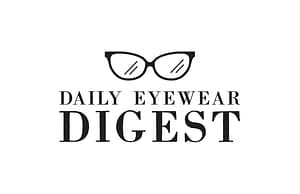Eyeglasses aren’t just about frames—they’re about lenses that suit your vision needs. From reading glasses to advanced multi-focal designs, understanding your options ensures clear sight and everyday comfort. Here’s everything you need to know about the six main eyeglass lens types.
Why Eyeglass Lens Type Matters
The lens type affects how clearly you see, how comfortable your glasses feel, and even how your eyes respond to changing light. Choosing the right one enhances both vision and lifestyle.
What Are Eyeglass Lenses Made Of?
Modern lenses are typically crafted from:
- Polycarbonate (impact-resistant)
- Trivex (lightweight and strong)
- High-index plastics (thin, ideal for strong prescriptions)
- CR-39 plastic (inexpensive and clear)
Overview of the 6 Main Eyeglass Lens Types
- Single Vision Lenses
- Bifocal Lenses
- Trifocal Lenses
- Progressive Lenses
- Photochromic Lenses
- High-Index Lenses
1. Single Vision Lenses
Designed with one consistent prescription across the entire lens.
Best For and Key Benefits
- Nearsightedness (myopia)
- Farsightedness (hyperopia)
- Reading or computer-specific lenses
Pros and Cons of Single Vision Lenses
Pros: Simple, affordable, easy to adjust
Cons: Only corrects one field of vision
2. Bifocal Lenses
These lenses have two prescription zones—typically for distance and reading.
How They Work and Common Uses
- Upper part: distance vision
- Lower part: close-up tasks
Advantages and Limitations
Pros: Dual-purpose, economical
Cons: Visible line; intermediate vision not corrected
3. Trifocal Lenses
Add a third zone for intermediate vision (like computer screens).
Who Needs Trifocals?
People with presbyopia who need clear vision at all distances.
Pros and Drawbacks
Pros: Three-in-one vision correction
Cons: Visible lines, longer adjustment period
4. Progressive Lenses
Offer a seamless transition between multiple prescription zones.
Smooth Vision at All Distances
- Distance (top)
- Intermediate (middle)
- Reading (bottom)
Progressive vs. Bifocal/Trifocal
No visible lines, more natural vision, higher cost.
Ideal Users and Common Misconceptions
Perfect for active adults aged 40+, but some need time to adjust.
5. Photochromic (Transition) Lenses
Lenses that darken in sunlight and clear indoors.
Light-Adaptive Technology Explained
UV-sensitive molecules adjust tint based on light exposure.
Benefits of Photochromic Lenses
- UV protection
- Reduces need for prescription sunglasses
Downsides to Be Aware Of
- Slow to transition indoors
- May not darken inside vehicles
6. High-Index Lenses
Thinner and lighter than standard lenses, ideal for strong prescriptions.
Thinner, Lighter Vision Correction
Reduces lens “bulge” and improves comfort and aesthetics.
Best Candidates for High-Index Lenses
People with prescriptions stronger than ±3.00 diopters.
Anti-Reflective and Blue Light Coatings
Popular lens add-ons that:
- Minimize glare
- Protect against digital eye strain
- Enhance night vision comfort
Choosing the Right Lens for Your Needs
Consider:
- Your daily activities
- Prescription strength
- Budget and insurance
- Frame compatibility
Cost Comparison Between Lens Types
| Lens Type | Approx. Cost | Ideal For |
|---|---|---|
| Single Vision | $100–$200 | Simple correction |
| Bifocal | $150–$300 | Reading + distance |
| Trifocal | $200–$350 | All-distance clarity |
| Progressive | $250–$500+ | Seamless multi-distance vision |
| Photochromic | Add $100+ | Outdoor comfort |
| High-Index | Add $100+ | Strong prescriptions |
Prescription Strength and Lens Choice
Stronger prescriptions benefit more from thinner, high-index or polycarbonate lenses for comfort and aesthetics.
Lens Materials: Polycarbonate, CR-39, Trivex
- Polycarbonate: Durable and safe for kids
- CR-39: Budget-friendly with high optical clarity
- Trivex: Combines clarity with impact resistance
Digital Lenses: Are They Worth It?
Digitally surfaced lenses offer sharper, customized vision—especially for high-index and progressive types.
Vision Insurance and Lens Coverage
Most insurance plans partially cover single vision or bifocals. Progressive and coatings often involve out-of-pocket costs.
Popular Brands for Quality Eyewear Lenses
- Essilor (Varilux progressives)
- Zeiss (high-precision lenses)
- Hoya (digital lenses)
- Transitions® (photochromic technology)
FAQs
Q1: Are progressive lenses hard to get used to?
They can be initially, but most people adapt within a week or two.
Q2: Do photochromic lenses replace sunglasses?
Partially. They’re ideal for everyday use but not always sufficient for high-glare environments.
Q3: Can kids use high-index lenses?
Yes, especially if they have strong prescriptions and want lightweight eyewear.
Q4: What lenses are best for computer work?
Single vision computer lenses or progressives with blue light protection work well.
Q5: How often should I replace my lenses?
Typically every 1–2 years, or as your prescription changes.
Conclusion
Choosing the right eyeglass lens transforms your visual experience. From basic single vision lenses to advanced progressive and photochromic options, understanding each type helps you make informed decisions for clearer, more comfortable vision. Don’t just pick lenses—pick the right ones for your life.

